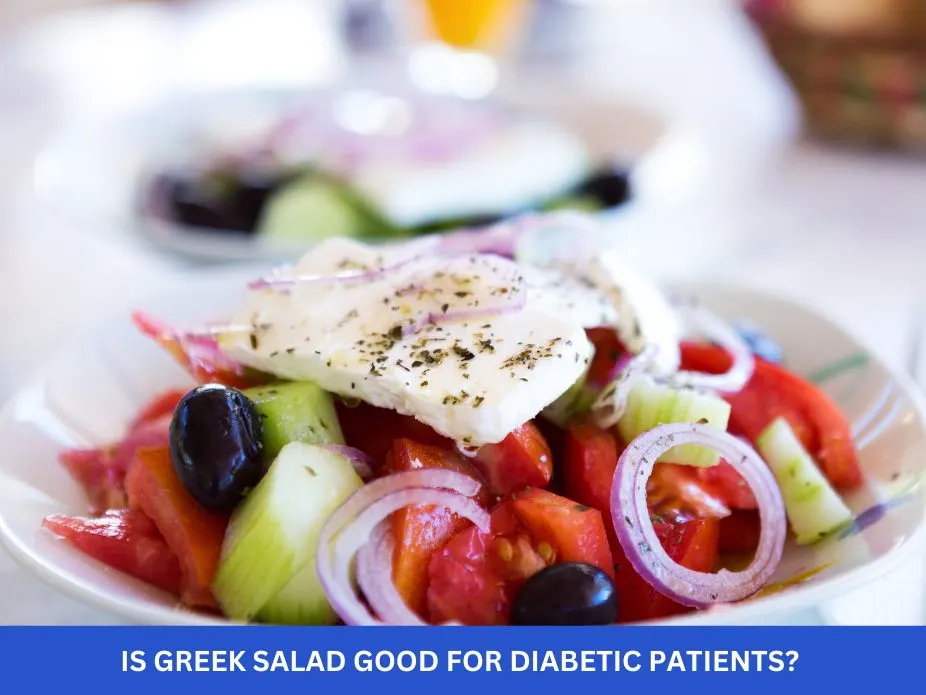Table of Contents
- Understanding Chest Pain with Diabetes
- Is Your Chest Pain Diabetes Related?
- Diabetic Chest Pain: When to Seek Help
- Types of Chest Pain in Diabetic Patients
- Managing Chest Pain: A Guide for Diabetics
- Frequently Asked Questions
- References
Living with diabetes comes with its own set of challenges, and understanding potential complications is crucial for managing your health effectively. One significant concern that many diabetics experience is chest pain, which can be alarming and confusing. This guide, Understanding Chest Pain: A Diabetes Patient’s Guide, will help you navigate this potentially serious issue. We’ll explore the various causes of chest pain in people with diabetes, differentiating between harmless discomfort and conditions requiring immediate medical attention. Let’s get started and empower you with the knowledge to prioritize your well-being.
Understanding Chest Pain with Diabetes
Chest pain can be a frightening experience, especially for individuals with diabetes. Diabetes significantly increases the risk of cardiovascular complications, making chest pain a serious concern that requires immediate attention. Research shows a strong link between diabetes and an increased risk of heart disease, further highlighting the importance of prompt medical evaluation.
Recognizing the Symptoms
The symptoms of chest pain can vary widely. It may feel like pressure, tightness, squeezing, or burning in the chest. Sometimes, the pain radiates to the arms, jaw, neck, or back. For people with diabetes, chest pain might be less noticeable or present differently than in those without the condition, making it crucial to be vigilant about any unusual discomfort in the chest area. The presence of other symptoms, such as shortness of breath, sweating, nausea, or dizziness, should also be taken seriously.
Diabetes and Chest Pain Risk Factors
Several factors contribute to the heightened risk of chest pain in individuals with diabetes. High blood sugar levels damage blood vessels and nerves, increasing the likelihood of heart disease. Furthermore, diabetes is linked to a 70% increased risk of sleep apnea and related sleep disorders. Sleep apnea, characterized by pauses in breathing during sleep, can further strain the cardiovascular system and contribute to chest pain. High blood pressure, high cholesterol, and obesity – conditions often associated with diabetes – also exacerbate the risk. Understanding the connection between diabetes and other health issues, such as Can Diabetes Cause Cramps? Understanding the Connection, is crucial for comprehensive management.
Seeking Immediate Medical Attention
In India and other tropical countries, access to timely medical care can vary. Never ignore chest pain. If you experience any chest discomfort, especially if accompanied by other symptoms, seek immediate medical attention. Prompt diagnosis and treatment are crucial to minimizing the risk of serious complications. Don’t hesitate to contact your doctor or visit the nearest emergency room. Early intervention is key to managing chest pain effectively and improving your overall health. While this article focuses on chest pain generally, the location of the pain can also be informative. For insights into a specific type of pain, you might find Right-Side Chest Pain helpful.
Is Your Chest Pain Diabetes Related?
Chest pain can be frightening, especially if you have diabetes. It’s crucial to understand that while not all chest pain is directly caused by diabetes, having the condition significantly increases your risk of heart complications. Research shows women with diabetes face a 40% higher risk of heart disease than men with diabetes, highlighting the importance of vigilance. This elevated risk stems from various factors including damage to blood vessels and increased inflammation associated with poorly managed blood sugar.
Understanding the Connection
Diabetes accelerates the development of atherosclerosis, a process where plaque builds up in the arteries, narrowing them and restricting blood flow. This can lead to angina (chest pain due to reduced blood flow to the heart) or even a heart attack. Other potential causes of chest pain in diabetic individuals include gastrointestinal issues (acid reflux, indigestion), musculoskeletal pain (rib cage or chest wall), and anxiety. However, it’s crucial to never dismiss chest pain, particularly if accompanied by shortness of breath, sweating, or dizziness. Experiencing other symptoms, such as Does Diabetes Cause Tachycardia?, can also indicate a more serious underlying issue.
Seeking Help in India and Tropical Countries
In many Indian and tropical countries, access to immediate medical care may vary. Therefore, early recognition of potentially serious symptoms is paramount. Don’t hesitate to seek medical attention if you experience unexplained chest pain. Early diagnosis and treatment of heart conditions are vital for improving outcomes and managing your diabetes effectively. Consult your doctor or visit a nearby clinic immediately for a proper evaluation. They can help determine the cause of your chest pain and recommend the appropriate treatment plan, tailored to your specific needs and the healthcare resources available in your region. Remember, diabetes can affect many parts of the body, and pain isn’t always localized to one area. For example, you might also experience Can Diabetes Cause Heel Pain?.
Diabetic Chest Pain: When to Seek Help
Chest pain in individuals with diabetes can be particularly concerning, often requiring immediate medical attention. While not all chest pain signifies a heart attack, the risk is significantly elevated in diabetics due to the increased prevalence of cardiovascular complications. Many factors associated with diabetes, such as high blood pressure, high cholesterol, and impaired blood vessel function, contribute to this elevated risk. Ignoring chest pain can have severe consequences, especially considering that complications like heart attacks can present differently in diabetic patients than in those without the condition.
Recognizing the Symptoms
Diabetic chest pain may not always manifest as the classic crushing feeling depicted in media. It can present as discomfort, tightness, pressure, or even burning sensation in the chest, often radiating to the jaw, neck, back, or arms. Other symptoms to watch out for include shortness of breath, sweating, nausea, and lightheadedness. The intensity and duration of the pain can vary. It’s crucial to remember that any unusual chest pain should not be dismissed, especially if accompanied by these other symptoms.
Seeking Timely Medical Care in India and Tropical Countries
In India and other tropical countries, access to healthcare can vary significantly. This highlights the importance of prompt action. Early diagnosis and treatment are vital in managing cardiovascular conditions. While the prevalence of foot ulcers in diabetics—nearly 15% experiencing them in their lifetime, with high amputation risks—might seem unrelated, it underscores the overall vulnerability of diabetics to circulatory complications. This vulnerability extends to the heart as well. Do not hesitate to seek immediate medical attention if you experience any concerning chest pain. Contact your doctor or go to the nearest emergency room. Your life might depend on it. Understanding the potential complications of diabetes, such as those discussed in Why Do Diabetics Get Sleepy After Eating?, can help you better manage your health. Regular check-ups, including those detailed in How Often is Diabetic Eye Screening?, are also crucial for early detection of potential problems.
Types of Chest Pain in Diabetic Patients
Diabetic neuropathy, affecting a significant 30-50% of patients, can cause a range of chest pains, often misdiagnosed due to overlapping symptoms with cardiac issues. Understanding these differences is crucial for timely and appropriate treatment, especially in regions like India and other tropical countries where access to specialized healthcare might be limited.
Neuropathic Chest Pain
This type of pain originates from nerve damage. In diabetics, high blood sugar levels can damage nerves throughout the body, including those in the chest wall. This can manifest as a burning, tingling, stabbing, or shooting pain, often described as a deep ache or pressure. The pain may be constant or intermittent, and its intensity can vary. It’s crucial to differentiate this from cardiac chest pain, which often presents differently.
Cardiac Chest Pain (Angina)
While not directly caused by diabetes, individuals with diabetes have a higher risk of heart disease. Angina, a symptom of coronary artery disease, presents as chest tightness, pressure, or squeezing, often radiating to the arm, jaw, or back. It is a medical emergency requiring immediate attention. The symptoms can mimic neuropathic pain, making accurate diagnosis challenging. Understanding how diabetes affects other systems, such as the respiratory system, is also important. For example, see our article on How Does Diabetes Affect the Respiratory System?
Musculoskeletal Chest Pain
Pain in the chest muscles or ribs, possibly due to poor posture, injury, or inflammation, can also occur. This type of pain is usually localized and aggravated by movement, unlike the more diffuse pain of neuropathy or angina. In hot and humid climates prevalent in many tropical regions, increased physical exertion might exacerbate this issue.
Gastrointestinal Chest Pain
Heartburn, indigestion, or acid reflux can cause chest discomfort, sometimes mimicking cardiac pain. These gastrointestinal issues are more common in individuals with diabetes due to various metabolic factors. Proper diagnosis is essential to rule out more serious conditions. It’s important to remember that many conditions can co-occur with Type 2 diabetes, but some are less likely than others. To learn more, check out our blog on Which Condition is Not Usually Associated with Type 2 Diabetes?
It is vital for diabetic patients experiencing chest pain to consult a doctor immediately for accurate diagnosis and treatment. Early intervention can prevent serious complications. Seek medical attention promptly if your chest pain is severe, persistent, or accompanied by other symptoms like shortness of breath or sweating.
Managing Chest Pain: A Guide for Diabetics
Chest pain can be alarming, especially for individuals with diabetes. Diabetes increases the risk of heart disease, making chest pain a potentially serious symptom requiring immediate attention. Understanding the causes and knowing when to seek help is crucial for managing this condition, particularly in Indian and tropical climates where access to healthcare might vary.
Recognizing Diabetic-Related Chest Pain
Diabetic patients often experience chest pain differently than non-diabetics. It might not always present as the classic crushing feeling. Instead, it could be a dull ache, tightness, pressure, or burning sensation in the chest, sometimes radiating to the jaw, arm, or back. These symptoms can be easily overlooked, delaying crucial treatment. The presence of other symptoms like sweating, shortness of breath, or nausea should always warrant immediate medical attention.
Blood Pressure Management & Chest Pain
Maintaining healthy blood pressure is vital for preventing and managing chest pain in diabetic individuals. For people with diabetes, the target blood pressure is generally below 140/90 mmHg, although some guidelines recommend aiming for below 130/80 mmHg. Regular monitoring and adherence to prescribed medications are essential. Consistent blood pressure control significantly reduces the risk of cardiovascular events, including chest pain. As you age, managing diabetes becomes even more critical; for more information, see our guide on Managing Diabetes as You Age: Challenges and Solutions.
Seeking Immediate Medical Help
In India and other tropical countries, access to prompt medical care can sometimes be challenging. Therefore, it’s crucial to know when to seek immediate help for chest pain. Any sudden, severe, or persistent chest pain warrants an immediate trip to the nearest hospital or clinic. Do not hesitate to call emergency services if the pain is accompanied by other alarming symptoms. Early diagnosis and treatment are key to preventing serious complications. Don’t delay; your health is paramount. Planning travel while managing diabetes requires careful consideration; check out our tips on Traveling with Diabetes: Essential Tips for a Safe & Healthy Journey for helpful advice.
Frequently Asked Questions on Understanding Chest Pain
Q1. What are the key differences between chest pain in diabetics and non-diabetics?
Diabetic chest pain might feel like pressure, tightness, burning, or radiating pain, unlike the sharp pain often associated with non-diabetic chest pain. It may also be accompanied by shortness of breath, sweating, or nausea.
Q2. Why are diabetics at a higher risk of cardiovascular complications, including chest pain?
High blood sugar damages blood vessels and nerves. Other factors like sleep apnea, high blood pressure, high cholesterol, and obesity also increase the risk.
Q3. What should I do if I experience chest pain as a diabetic?
Seek immediate medical attention. Do not ignore chest pain, especially if accompanied by other symptoms like shortness of breath, sweating, or nausea. Prompt action is crucial to minimize risks.
Q4. How can I reduce my risk of experiencing chest pain as a diabetic?
Maintain good blood sugar control, manage high blood pressure and cholesterol, address sleep apnea if present, and work towards a healthy weight. Regular checkups with your doctor are essential.
Q5. What are the potential consequences of ignoring chest pain as a diabetic?
Ignoring chest pain can lead to serious cardiovascular complications, potentially life-threatening. Early diagnosis and treatment are vital to improve health outcomes and minimize the risk of severe consequences.
References
- A Practical Guide to Integrated Type 2 Diabetes Care: https://www.hse.ie/eng/services/list/2/primarycare/east-coast-diabetes-service/management-of-type-2-diabetes/diabetes-and-pregnancy/icgp-guide-to-integrated-type-2.pdf
- Your Guide to Diabetes: Type 1 and Type 2: https://www.niddk.nih.gov/-/media/Files/Diabetes/YourGuide2Diabetes_508.pdf



